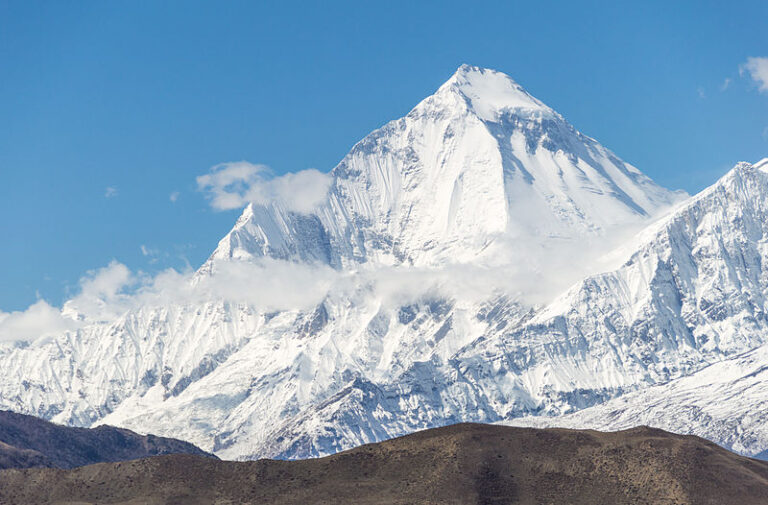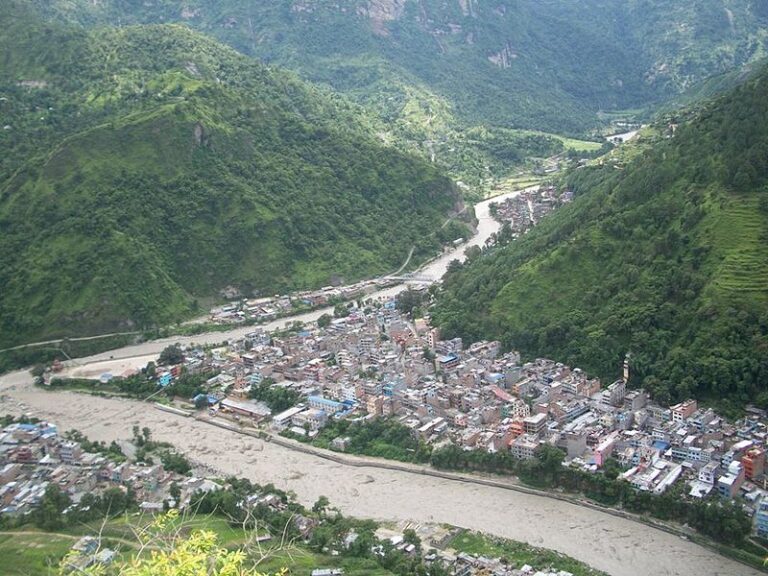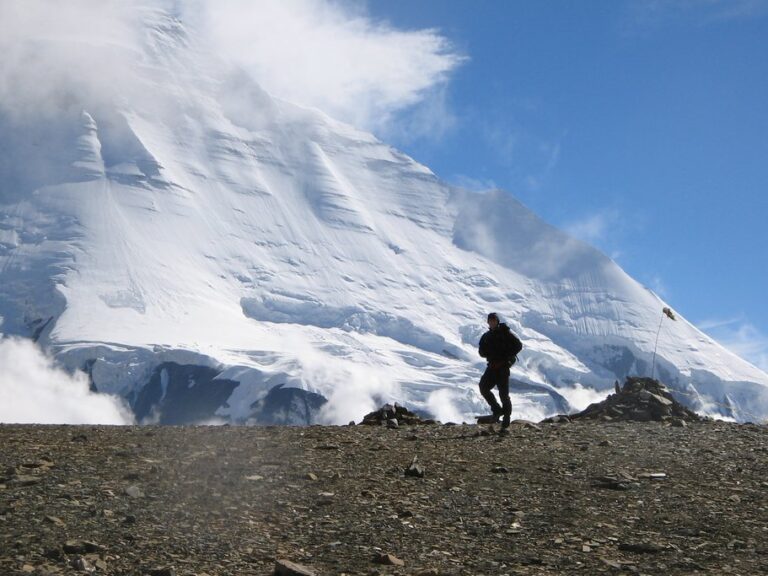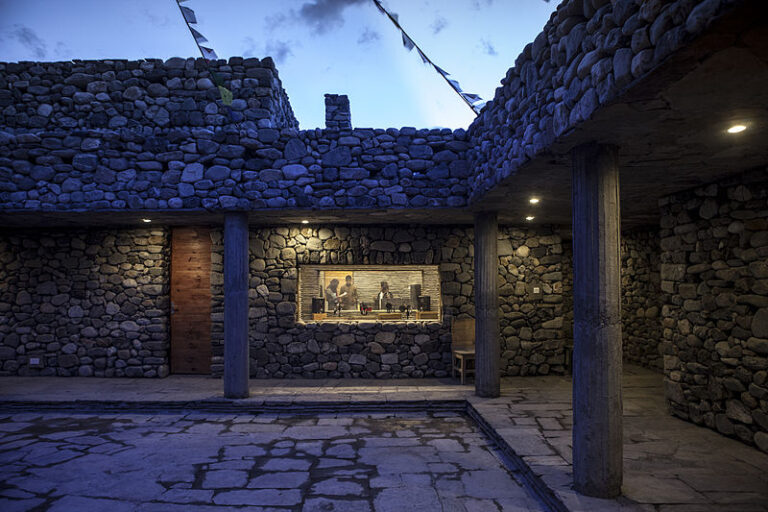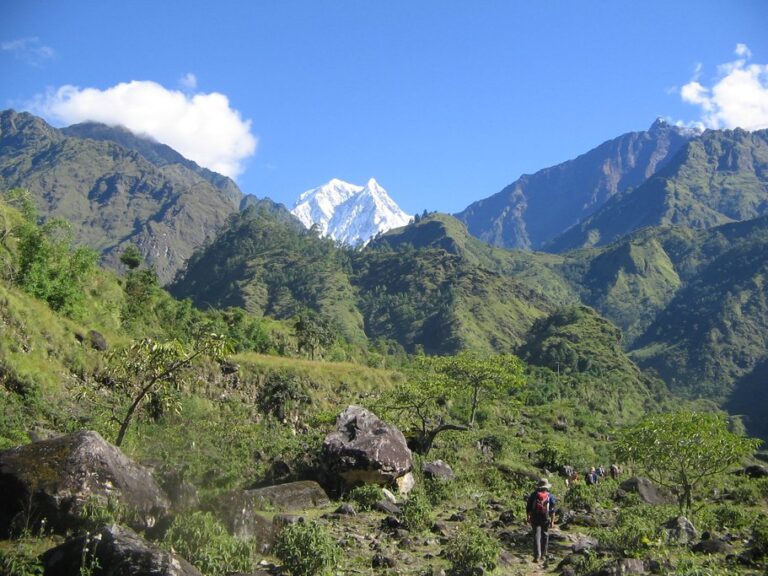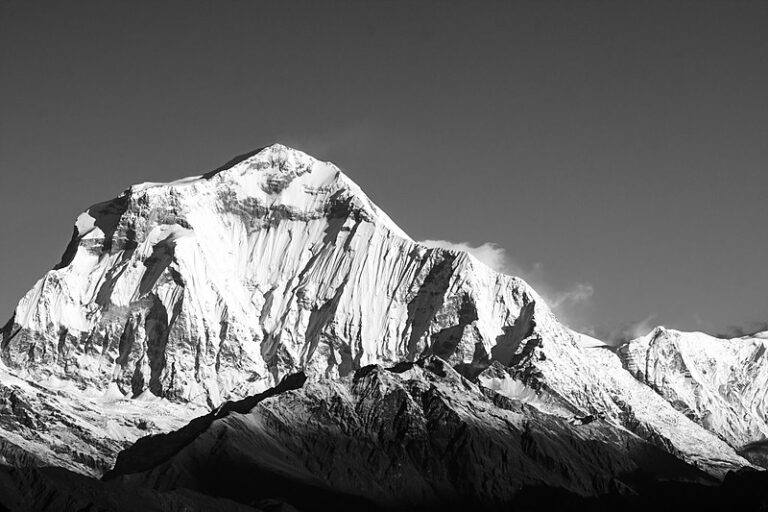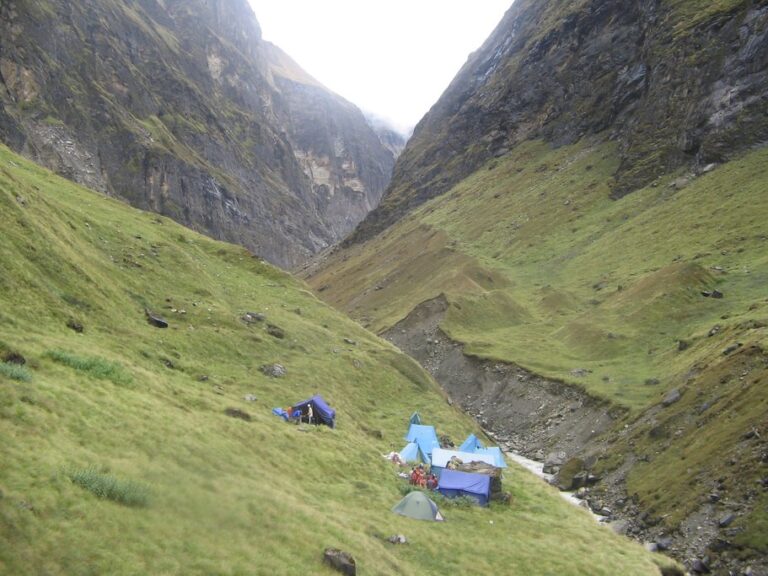Day 01 – Arrival in Kathmandu transfer to Hotel– upon your arrival date, we will pick you up from the Tribhuvan International Airport and escort to hotel. Please note that your hotel will locate center of the Kathmandu city called Thamel, which is main tourist hubs of Kathmandu valley.
Day 02 – Drive or fly to Pokhara (820m.a.sl) 7 hours drive – 25 minutes flight) – There are two options to get Pokhara from Kathmandu valley although tourist bus is cheapest option to go Pokhara which may takes about 7 hours and offers to see beautiful terraced field, river valleys, small towns and massif views of Ganesh Himal, Manaslu, Dhaulagiri and Annapurna mountain ranges. If trekkers have tight schedule then the flight takes only 25 minutes and commands to see splendors of Ganesh Himal, Manaslu, Dhaulagiri and Annapurna mountain ranges from the windows of aircrafts.
Day 03 – Drive to Beni bazaar and trek up to Tatopani village (985m.a.s.l) – 4 hours walks – We will drive an approximately 4 hours on a good road with massive views of Annapurna, Dhaulagiri, Manaslu mountain ranges and superb views of agriculture terraced field, kali Gandaki river valley and green hills to get Beni bazaar. After pick up lunch in Beni bazaar; we will walk an approximately 4 hours to get Tatopani village pass by Baguwa, Tallo singa, Singa and Jyamire villages. There are some basic guesthouses, homestays, beautiful camping ground and natural hot Spring in Tatopani village.
Day 04 – Trek to Babiachaur (970m.a.s.l) – 5 to 6 hours walk – we will walk just bank of the Myagdi River with roaring sound and charm views of valley, rocky hills, small cascading waterfalls, grassy cliffs and cultivated terraced fields. Most of the time we have to do short but often up and down and the trail pass through small villages called Messar, Simalchaur, Kaseri and Tarakhet. There are half dozens of basic guesthouses and camping ground in Babiachaur where we will set our tent to spend a joyful night.
Day 05 – Trek to Dharapani village (1360m.a.s.l) – 6 hours walks – The trail ascends gradually to Dharapani village pass by half dozens of small villages and cultivated lands where local people grows wheat, maize, rice and vegetables so major attraction of the day would be the view of terraced field with seasonable harvest, rural life, waterfalls, green forest and rugged rocky hills and superb views of Gurja Himal 7193m, Putha Hiuchuli 7246m and massif view of Dhaulagiri 8167m. Dharapni is a beautiful village, which is inhabitant by the Magar people and has half dozens of basic guesthouses and camping grounds to set our tents.
Day 06 – Trek to Muri village (1720m.a.s.l) – 5 to 6 hours walks – Begins of the trek we will follow the Maygdi river for one hour then the trail turns to the left hand sides and ascend gradually through the cultivated lands, jungle and moraines to the Muri village which is last civilization before the French and Dhampus pass. The scenery will be similar like previous days like green forest, small waterfalls, rocky moraines, river valleys and villages, which are settled over the vertical land. There are half dozens of guesthouses, provision shop, homestays and camping grounds are available in Muri village where we will set our tent to spend joyful night.
Day 07 – Trek to Bagar or Boghara (2080m.a.s.l) – 6 hours walks – Trek begins with short climb to a viewpoint that offers to see charming landscapes, river valleys and neighbor villages. From the viewpoint the trail descends and ascends gradually just bank of the Myagdi River to get Bagar with beautiful river valley, huge rocky hills, waterfalls and landscape. There are not any guesthouses and homestays in Bagar although available good camping ground to set the tents.
Day 08 – Trek to Dobhan Kharka (2520m.a.s.l) – 6 hours walks – The up and downhill trail lead us through the grassy cliff, forested trail and picturesque hills pass by a beautiful waterfalls, single stone hut and three Kharka (Pastureland) called Simakharka, Lipse Kharka and Pilangkos Kharka where can be seen hundreds of grazing yaks, sheep, mountain goats and as well as some of the wildlife as blue sheep, deer and Himalayan Pika. Dobhan Kharka is a beautiful camping ground that commands us to see some of the snowcapped peaks called Kambon Himal, Myagdi Himal, Jirbang Himal and Manapathi Himal. (Only in main season)
Day 09 – Trek to Chaur bag khola camp (3445m.a.s.l) – 6 to 7 hours walks – Today we have to climb up about 1000 meters to get Chaur bag khola camp because there are not any safe places to set tents and water sources between of Dobhan Kharka and Chaur bag Khola camp. The ascended trail lead us to Chaur bag Khola camp through the moraines and grassy cliffs with charms views of grassy landscapes, rugged rocky hills, Myagdi River valley, snowcapped peaks, glaciers and a beautiful waterfalls just bellow the Puchhar base camp.
Day 10 – Trek to Italian camp (3660m.a.s.l) – 4 to 5 hours walks – Italian base camp is not so far from Chaur bag khola camp but still it might take 4 to 5 hours to get there due to high elevation where we may feel lack of oxygen and requires to walk very slow to skip high altitude sickness. There are 5 base camps at a single place called Puchhar base camp, American base camp, Italian base camp, Swiss base camp and French base camp although Italian base camp is best one to set up tents due to safe and less blowing winds. We will set up our tent in Italian base camp with astonishing sunset views on the background of high rocky hills and peaks.
Day 11 – Rest and acclimatization day – Considering by high elevation and acclimatization, we will spend two nights in Italian base camp. After lunch, we will hike up to deposit camp to get acclimatization which is 3940 meters and offers to see astonishing views of Dhaulagiri series, Manapathi peak and Tsaurabong. After exploration of deposit camp, we will relax in Italian camp with astonishing views of nature and sip of hot drinks.
Day 12 – Trek to Japanese camp (3890m.a.s.l) – 4 hours walk – Japanese camp is not so far from Italian camp but still it may takes an approximately 3 to 4 hours due to high elevation. We will climb up approximately 3 hours to get a hilltop that purpose to see beautiful view of Dhaulagiri, Manapathi peak, Tsaurabong peak and its charming ranges and glaciers. From top of the viewpoint, we will short descend to the Japanese camp where we will set up our tent to spend a joyful night.
Day 13 – Trek to Dhaulagiri base camp (4748m.a.s.l) – 5 to 6 hours walks – an approximately two hours walk from Japanese camp appear a viewpoint that commands to see splendid view of Tukuche peak, Dhaulagiri, Mukut peak, Sita chuchura and its panoramic views and glaciers. Then the trail lead us to Dhaulagiri base camp pass by several small icy streams, rocky moraines and a huge glacier called Chhongardan so we have to pay attention to safe from the canvases and small frozen Lakes. The Dhaulagiri base camp offers to see superb views of Dhaulagiri II, III, V and its beautiful ranges and glaciers.
Day 14 – Reserved day – if our health and weather condition is bad then we will sleep another night in Dhaulagiri base camp.
Day 14 – Trek over the French pass 5360m and trek to Hidden valley (5140m.a.s.l) – 7 to 8 hours walks – The gradual up trail lead us northern side of Chhongardan glacier and passes through rocky and snowy moraines to the French pass that may takes about 4 hours to get atop of the pass that purpose to see 360 degrees of Tukeche peak, Dhaulagiri I, Mukut peak, Tashi Kang, Sita Chuchura and its beautiful nature. We have to be very careful with blowing strong winds and cold temperature, which would be minus 15 degree centigrade in October and November. Heading down to hidden valley requires putting on crampons and ice axes due to walk on the slippery icy trail.
Day 15 – Reserved day – if our health and weather condition is bad then we will sleep another night in Dhaulagiri base camp.
Day 15 – Trek over the Dhampus pass 5244m and trek to Yak Kharka (4210m.a.s.l) – 6 to 7 hours walks – The snowy path lead us to Dhampus pass with astonishing views of high Himalayas and rugged rocky moraines. Trek from hidden valley to Dhampus pass may takes approximately three hours will depend on our walking speed, health condition and weather. From the top of the pass we will have relishing views of Annapurna and Nilgiri mountain ranges and the trail gently descends to the yak kharka where half dozens of Bhatti pasal (small teashop) and camping ground is available. The Bhatti pasal sales dry meat, biscuits, mars, snickers, beer, and local wine and hot drinks.
Day 16 – Trek to Marpha village (2670m.a.s.l) – 6 hours walk – The trail gently descend from the camping ground and passes through the juniper forest with great views of Annapurna I, series of Nilgiri, Baraha Shikar and Kali Gandaki River valley. After 5 to 6 hours walk approach Marpha village where dozens of good guesthouses are available. After long time we will take room from guesthouse to celebrate successful trip of Dhaulagiri trek.
Day 17 – Marpha village is connected with motor road so if trekkers want to drive back to Pokhara then possible to take jeep or bus from Marpha village which may take 8 to 9 hours to get Pokhara or also possible to trek continuously until Tatopani that takes another three days.
Day 17 – Trek to Jomsom (2720m.a.s.l) and exploration of Dhumba Lake – Jomsom is not so far from Marpha village that may takes approximately three hours with easy walk so after lunch we will explore a beautiful lake called Dhumba Lake which is located just bottom of the Nilgiri mountain and nearby the Dhumba village. Sight trip to Dhumba Lake offers to see stunning views of Tukuche peak, Thapa peak, Nilgiri peak, Dhaulagiri and charms views of Kali Gandaki River valley.
Day 18 – Fly back to Pokhara (820m.a.s.l) – 25 minutes flight – early in the morning we will fly for 25 minutes above the Tukuche peak and Dhaulagiri glacier that offers to see closer view of Dhaulagiri and panoramic views of Annapurna, Mardi Himal, Manalslu, and Machhapuchhre mountain ranges from the window of aircraft.
Day 19 – final departure – after successful trip of Dhaulagiri trek, you will fly back to your home with great experience of Nepal and many tales about Nepal, Himalaya, Nepali people and their culture that makes you a storyteller among your friends and colleagues.
